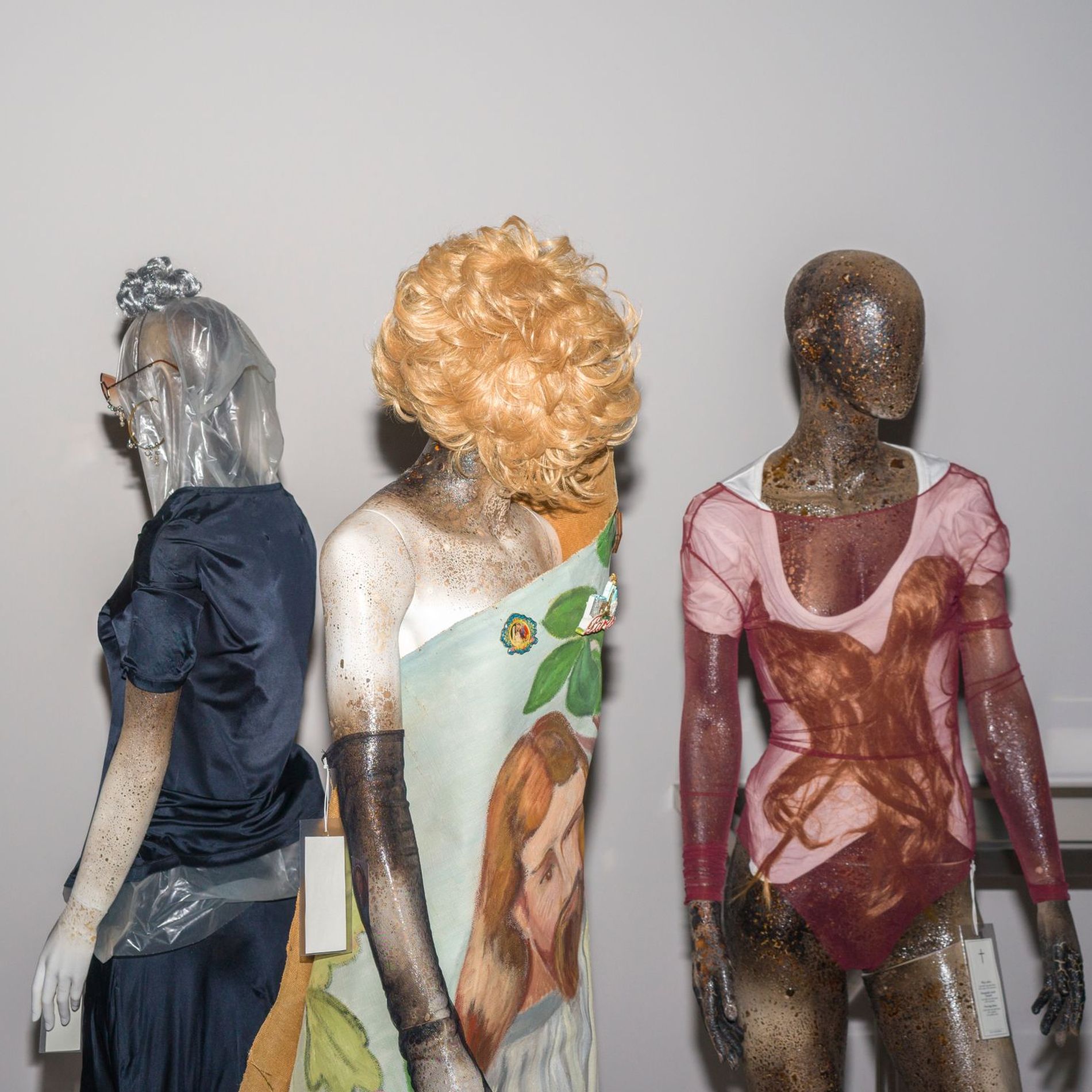Beloved Swedish designer Ann-Sofie Back’s unmissable exhibition, ‘Go As You Please’, confronts death head-on and buries her archive once and for all
At the entrance to Ann-Sofie Back’s career-spanning exhibition at Liljevalchs museum in Stockholm, one finds an ominous tombstone perched on a red carpet. Projected on the stone is an endless scroll of names – over 500 total – spanning fashion industry heavyweights (Nick Knight, Lotta Volkova, Jonny Johansson), celebrities (Kim Kardashian, Icona Pop, the Spice Girls) and four people currently working at Vogue Scandinavia (including our editor in chief).
These people are not dead (in fact, many of them attended the jam-packed exhibition opening on Thursday, flying in from all corners of the earth to raise a glass of champagne and lay white flowers on the ground). The piece, rather, is a cheeky nod to those who helped Back in any manner, big or small, throughout her 20-year reign (1998 - 2018) as the number one l’enfant terrible of Scandinavian fashion. Back’s career took her from Stockholm to London to Paris and back again, during which time she created industry-defying, anti-fashion fashion both for the in-the-know few and, later, for a larger mass of less-fussy cool girls. “A lot of people helped me, and I hate it because I feel I owe them,” she says. “So this is a thank you.” At last, that lingering feeling has been laid to rest.
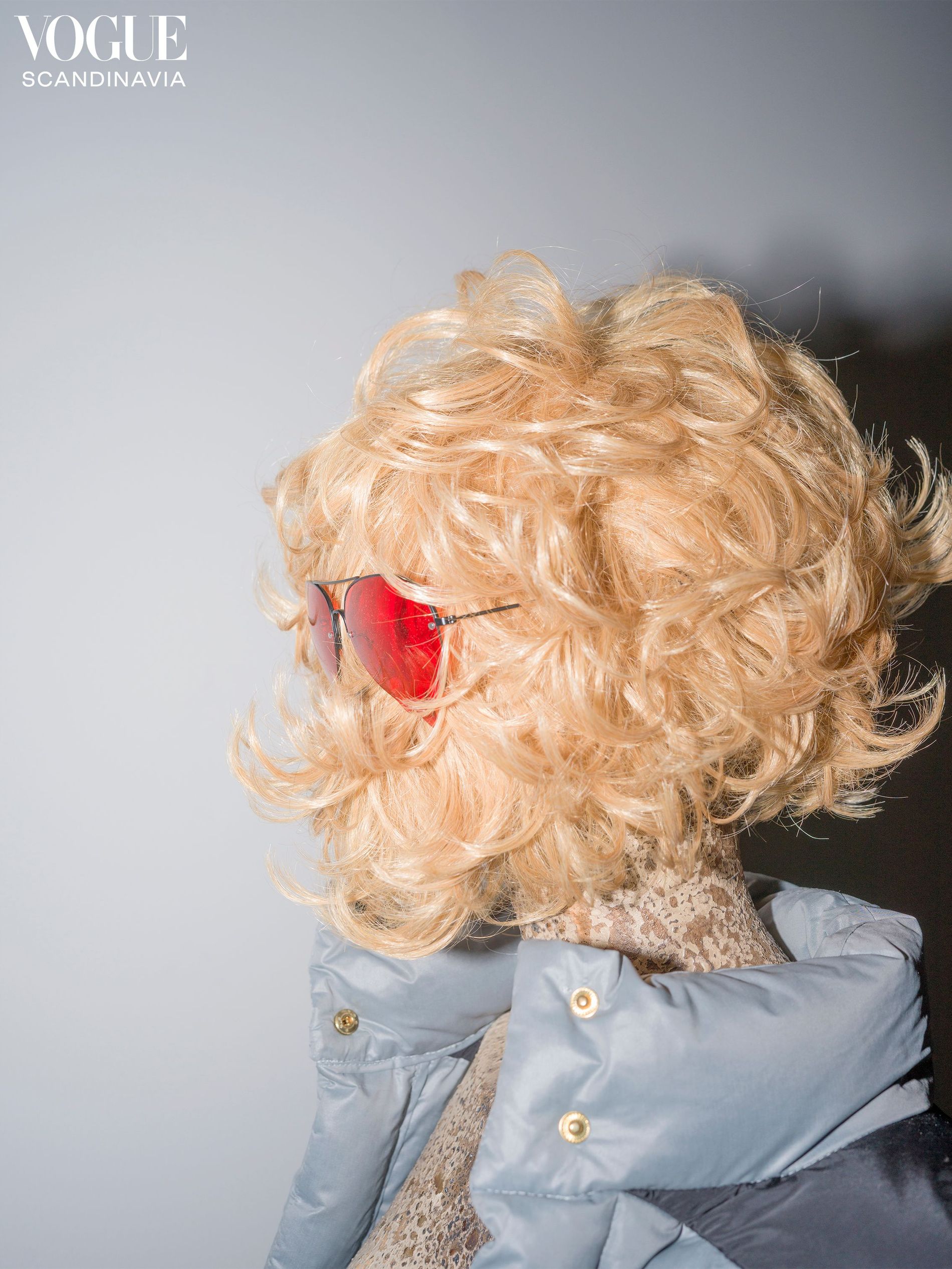
Photo: Kristian Bengtsson
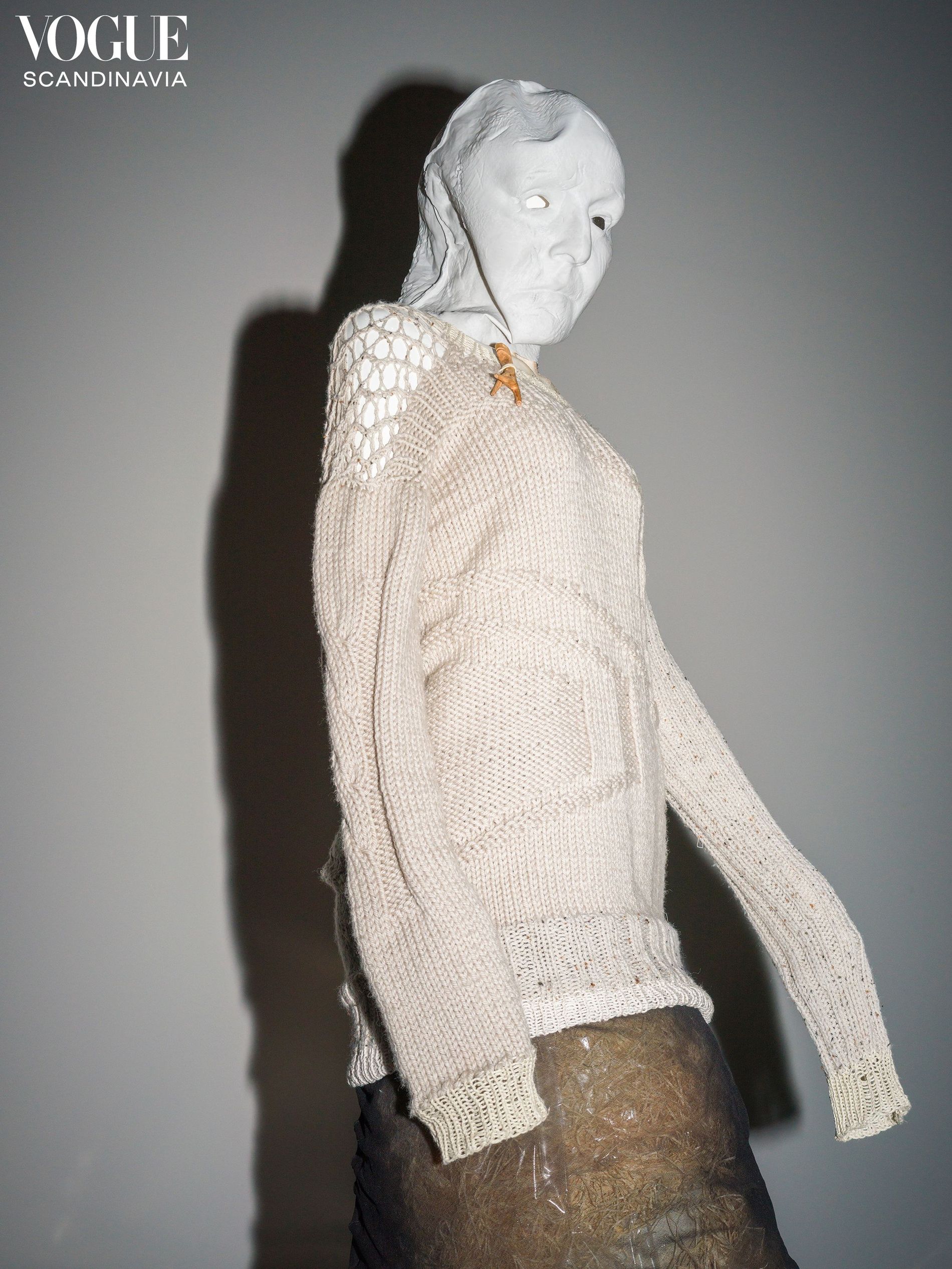
Photo: Kristian Bengtsson
That is hardly the only nod to death in ‘Go As You Please’, the don’t-call-this-a-retrospective retrospective, which finds a curated selection of Back’s greatest hits mashed up and remixed into looks that feel almost alarmingly current (she reckons it’s about 20 per cent of the total Back archive). “We quickly figured out we didn’t want to do a straight retrospective,” says Back, who has been co-curating and co-styling the exhibition with stylist Nicole Walker over the past two years. “So what we’ve done instead is mixed all the seasons in a way that feels relevant today.”
We quickly figured out we didn’t want to do a straight retrospective,. So what we’ve done instead is mixed all the seasons in a way that feels relevant today.”
Ann-Sofie Back
The morbid theme, however, came a bit later – inspired by a slew of unfortunate events that occurred in Back’s own life. “I’ve had a very dark period in my life, with a lot of death and illness. Death has been so engulfing my life,” says Back in her matter-of-fact sort of way. “Also, the end of my company – which was my identity – and my dog died in a horrible accident.” During this time, Back was also confronted with her own mortality when she was diagnosed with breast cancer. Needless to say, death was very much “on her mind”. “So then we thought, ‘Let’s bury the archive’,” says Back. “This is the end.”
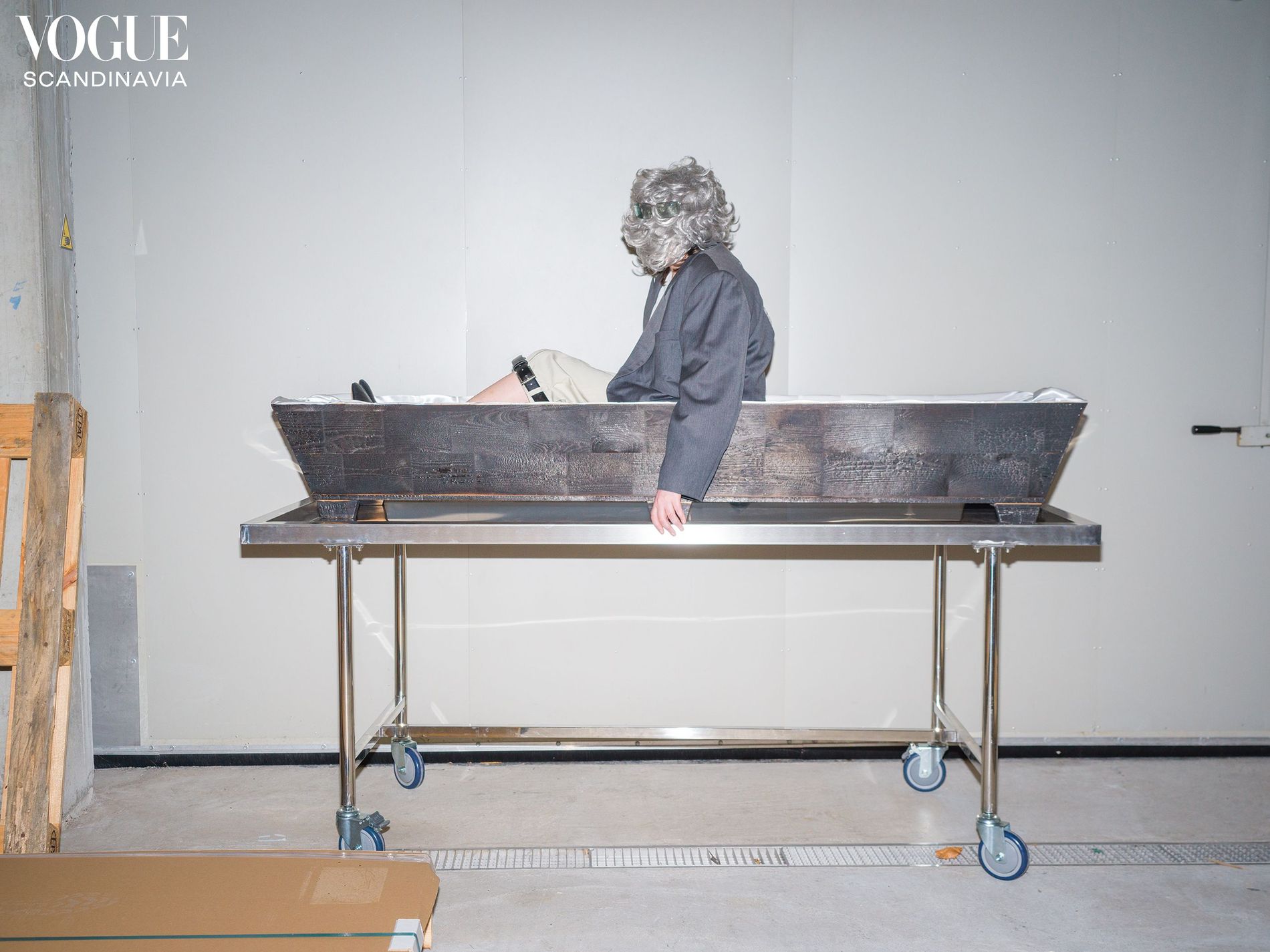
A portrait of Ann-Sofie Back. Photo: Kristian Bengtsson
Charred mannequins (they were lit on fire before they were dressed) stand like zombies throughout the main hall (some lie on gleaming silver gurneys) wearing the carefully curated looks. The pieces on display span the small, curly hair hats worn by the models who walked her Central Saint Martins MA graduate show to the super-high-end pieces made under Ann-Sofie Atileje (it was her financially unsuccessful passion project to offset the more commercial label BACK). Looks are broken down by hanging tags, stylised iterations of those one might find in an actual morgue.
For someone so ahead of her time, Back is, somewhat surprisingly, “extremely nostalgic”. “I’m even nostalgic about things I don’t like,” she says. Hidden throughout the exhibition are trinkets from her own life – her own baby teeth, for example, and her late grandfather’s medal of honour, stuffed into the pocket of a coat.
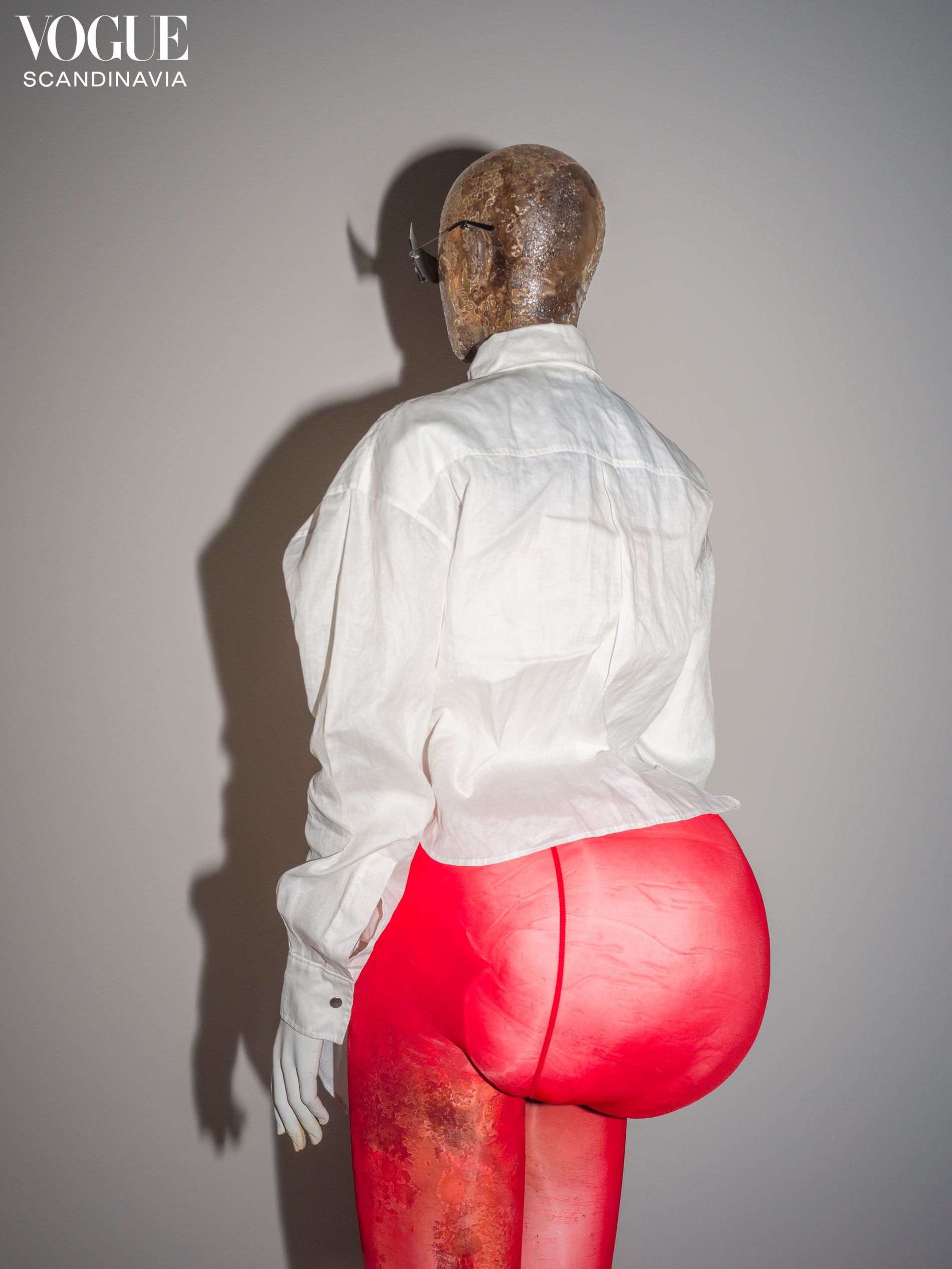
Photo: Kristian Bengtsson
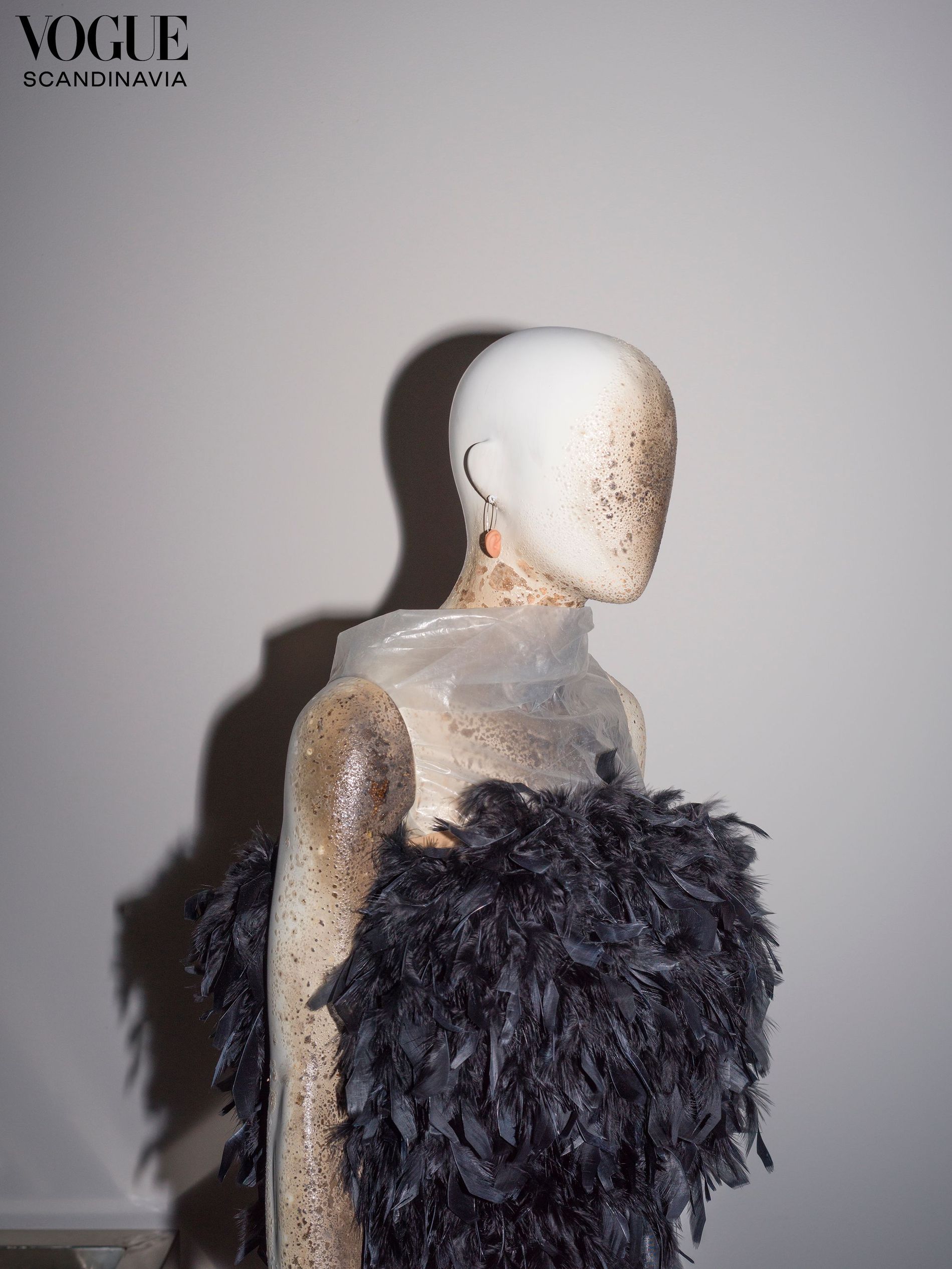
Photo: Kristian Bengtsson
Standing in this hall, one thing becomes abundantly clear: Ann-Sofie Back did it first. What, exactly, is “it”? Where to start; upcycling (back when she did it, it was called ‘customising’), unexpected padding, traditional garment details put where they ought not to be, everyday items reimagined as clothing, the list goes on. I’ll just say the quiet part out loud: most of-the-moment designers in Stockholm (and some beyond) owe something to Back (some more than others). I ask her how it feels to see other designers so – ahem – inspired by her work.
“Inspired…” she grins. “That’s a nice way of putting it.”
Does it bother her?
“It depends on who has done it, how upset I get,” she says. “There are a couple of people who actually trigger me.”
Walker, who’s standing nearby, chuckles.
“You just live with it,” Back concludes. “What are we going to do? Sue each other?”
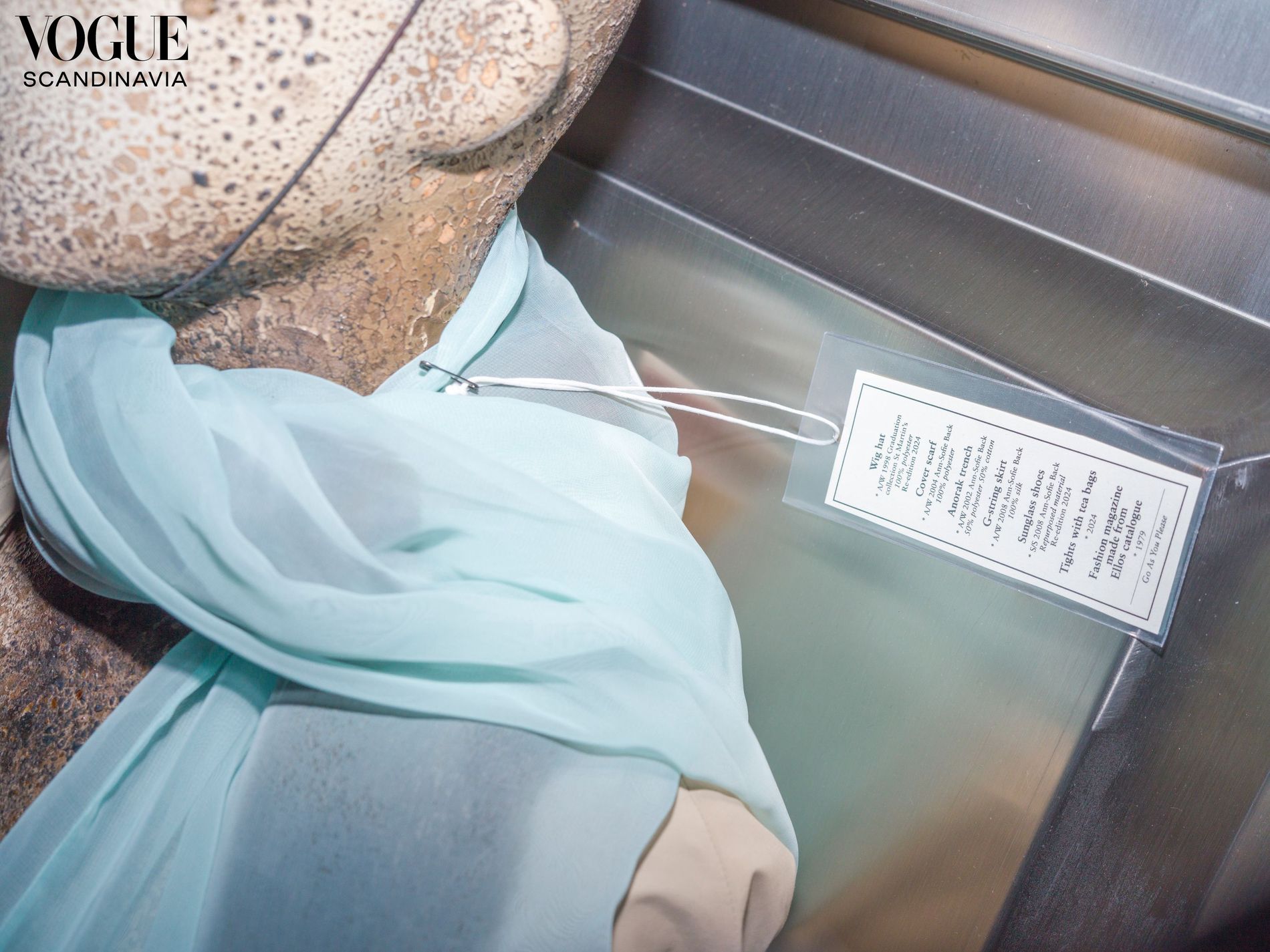
Photo: Kristian Bengtsson
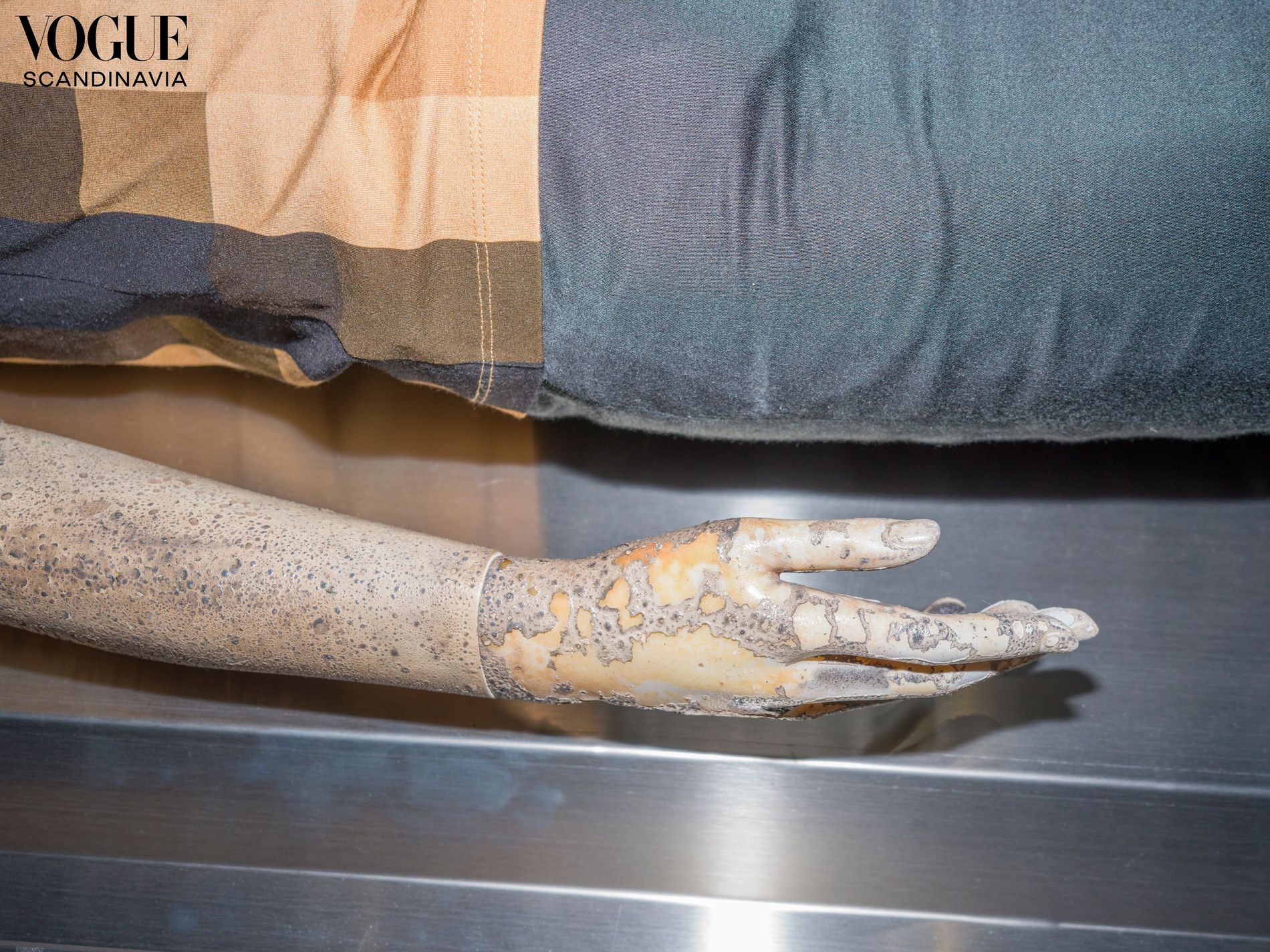
Photo: Kristian Bengtsson
In the exhibition’s other room, the funeral takes place. Here lies a long row of coffins. In lieu of bodies, more looks, nestled inside. “We bought them wholesale,” notes Walker, gesturing to the coffins. Back points to a projection on the wall – a film of models (including her unassuming childhood friend, a longtime muse) standing by an idyllic lake, wearing her clothes. “We shot that in my horrible hometown,” she says. To Back, the town itself signifies death, specifically, “the death of creativity”. Yet Back grew from here, despite the odds, like a weed fighting through the cracks in the concrete.
In the wake of all that tragedy, Back doesn’t fear her own death. In fact, she’s quite at peace with the inevitable conclusion. “It’s been so much on my mind since I had breast cancer – it became very real.” she says. “But that made me feel okay.” One day, whilst preparing this exhibition, blood started leaking from her ears and rather than go to the hospital, she simply went to bed (true story – it ended up being an ear infection).
On my way out Back hands me a copy of the exhibition book. I ask if she can sign it – following the exhibition everything she’s ever touched will probably be worth a bit more money. Still, I intend to keep the book. On the streetcar home, I open the book to see what she wrote: “See you on the other side”.
